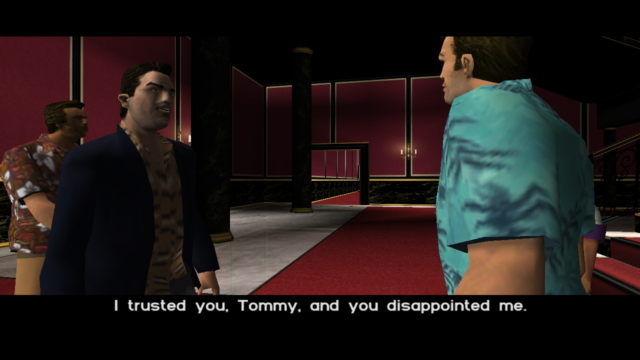
Grand Theft Auto: Vice City
Written by: Rik
Date posted: October 13, 2021
- Genre: Action
- Developed by: Rockstar Games
- Published by: Rockstar Games
- Year released: 2003
- Our score: 9
Having finally made the transition to 3D with some success, Rockstar were never likely to rest on their laurels when it came to a follow-up to Grand Theft Auto III. Just as the previous generation had brought a mission pack for the first game, and then a sequel that didn’t quite live up to the name, Vice City, too, started life as an extra set of missions for the third game before being developed as a fully-blown, stand-alone release.
While the limited timeframe and the restrictions in place by that generation’s console hardware meant that significant technological improvements over GTA III were unlikely, any accusations of a quick-fire cash-in were subverted by moving the action away from the grim and grey Liberty City to the sunny party town of (Miami) Vice and turning the clock back to 1986.
In addition, in place of the silent protagonist of the previous game, we’re introduced to a named player character, Tommy Vercetti. Fresh out of prison, Tommy has been sent to Vice by his mafia boss Sonny Forelli, to establish a base in the city and find a way into the thriving drug business. To this end, a deal is set up, and inevitably goes wrong, leaving Tommy in the position of having neither the drugs nor the money and under significant pressure from Sonny to recover both.
Although the set-up is similar to GTA III, in that you’re a guy who starts out without very much and in quite a bit of trouble while needing to work his way up the ladder in a new city, having Tommy talk back to other characters enhances the story element of the game, making it feel more like a movie and less like you’re just a really quiet guy who acts as a patsy for the real movers and shakers in the city, going from place to place just to receive a set of instructions.
The game starts off in a similar vein, however, as you follow a series of fairly linear missions, acquired from different locals who may have a lead on who was responsible for your deal going bad. Aside from the different setting and the occasional necessity of a change of clothes for certain objectives, it all feels pretty familiar, although I was struck by the high difficulty of some of the initial tasks, with one early mission involving golf buggies proving particularly irksome.
As things progress, though, there is a sense of elements being refined and developed: combat is now much more bearable, with shoot-outs less of a lottery and the aiming of automatic and semi-automatic weapons much improved. (Also, simply driving over enemies is no longer the workaround it once was, with bad guys now equipped with reinforced ribcages and able to recover more easily from being hit with a vehicle at high speed).
Plus, the game takes more of a step back during missions to explain what it is you actually have to do in each one rather than simply throwing you straight into it. And you no longer have to refer to a physical copy of the city map to find your way around: navigation is significantly easier, with the mini-map in the bottom left corner of the screen now more detailed and including alleyways and other non-road routes, and complemented by a full in-game map, which also indicates your current location.
The action really starts to deviate from its predecessor when Tommy gains sufficient power and influence for him to be encouraged to start building up a property portfolio, acquiring various businesses around the city that are on the verge of bankruptcy and turning them into profitable enterprises. At this point the main story missions dry up, and you’re pretty much forced to start exploring the city and see what your options are.
Buying a property involves an initial cash outlay, but each one ultimately earns you money back once you complete one or more tasks relating to that business’s operations. This might be as simple as a mini-game that involves driving around in an ice-cream van selling drugs to beach-goers without attracting the attentions of the police, or it may involve a whole series of separate missions.
In some respects, elements of the previous game that were stand-alone tasks have been folded into these so-called ‘Asset’ missions: stealing different cars to order, for example, is now the means by which you maximise profits at the local car showroom. And although you can still earn money the old-fashioned way by stealing a cab and picking up a few fares, taking control of a local taxi company also means participating in some aggressive turf wars that culminate in rival firms queueing up to destroy you and your cab, demolition derby style, inside a sealed arena.
Once you own a property, it becomes a new save point for you, and once you complete all of its missions, you can also collect your cash earnings upon returning there. After a certain point, cash flow will have long ceased to be an issue, especially as the only things you can spend it on are more property (including non-business safe-houses, which don’t earn money but give you another save point and a place to store vehicles) and weapons at one of two Ammu-Nation stores.
But, you have to persist, at least until the point at which the game deems you to have enough assets to unlock the rest of the story. This is potentially an area in which guidance could be a little clearer, as the various properties aren’t flagged on the map, and there’s no indication of the criteria that you’re striving to meet.
To be fair, it’s all good fun, and there’s no sense that the asset missions are supplementary in any way – they’re given the same importance as story missions in terms of briefings and mid-level cut-scenes, so you’re really encouraged to consider them as part of the main game. You don’t have to complete them all to unlock the endgame, but there’s very little reason not to go beyond the bare minimum and experience the full range of missions that the game has to offer.
Beyond that, there are all kinds of other things you can try out, from street and circuit racing, to pizza delivery, and of course the vigilante and other emergency service tasks featured in the previous game. There is also a series of ‘hitman’ style missions that involve answering a ringing payphone, all of which are also good fun, even if they’re lacking any narrative payoff.
Side missions involving local gangs also make a low-key return, and though they’re also now furnished with cut-scenes, completion of this part of the game does still involve ongoing danger in passing through a particular neighbourhood, with gangs waiting for you to collect money from businesses in the area and showering you with bullets. Owning those businesses does also mean that you have your own gang of gun-toting I-talian Americans in Hawaiian shirts ready to return fire but in general the constant spectacle of gunfights between two sets of AI citizens in the streets is slightly cartoonish and soon becomes an irritant.
Other new developments not mentioned already include aircraft and helicopters, as well as their radio-controlled equivalents. While for the bulk of the game, keyboard and mouse controls are perfectly fine, you have the sense that these would be much easier using a controller. Which you can of course use, although I never could quite be bothered to reconfigure everything to work with a 360-era effort, and instead muddled through either with keys alone, or by combining keys with the controller.
(Speaking of muddling through, I also completely ignored all tweaks and fan-made patches. SilentPatch once again crashed the game altogether, so I decided to just play it out of the box as far as possible. The frame rate seemed a bit woolly at first, but if you turn the frame limiter off, it apparently causes problems with the gameplay, so I left it locked at 30 FPS. Which modern gamers might find upsetting, but anyone who remembers when such performance was something to aim for is likely to be more forgiving. Ultimately, I made a decision that all I actually wanted to do was play the game, which I was less likely to do if I wasted hours farting about with the settings).
Also new are motorbikes, which are a great addition (unlike in Midnight Club II, another Rockstar game, in which I remember them being more of a pain in the arse), and the sight of Tommy zooming over one of Miami’s bridges on a PCJ600, his Hawaiian shirt billowing in the breeze, is surely the iconic moment of the game. There’s a great sense of risk/reward in that the bikes are much more nippy and agile in terms of getting through gaps, but if you make a mistake, or get hit, then the consequences are more severe.
In terms of 80s vibes, the inclusion of licensed music is a good one, overall, although there was a part of me that found it slightly strange to be hearing real music in a fake world and perhaps wondered if the fictional pastiches of GTA III might have been more appropriate. Also, it does feel slightly odd playing a game set in a ‘retro’ era when more time has now passed than came between that era and the date of release. Going back to 2003’s version of 1986 in 2021 adds an extra layer of separation somehow: as if the mind can’t quite process the 80s music and the 00s graphics at the same time.
Anyway, the soundtrack is full of killer tracks, including all of the popular genres: hip-hop, hair-metal, synth-pop, and the rest (plus the option of talk radio, if you prefer). My favoured radio station was Emotion 98.3, which seemed to capture all of the over-wrought, over-produced tracks of the era: John Waite’s Missing You, Bryan Adams’ Run To You, (I Just) Died In Your Arms by Cutting Crew…
And there’s also Crockett’s Theme by Jan Hammer, one of a number of direct references to Miami Vice. Don Johnson may not feature, but the actor who played Crockett’s partner Tubbs, Philip Michael Thomas, appears as an extremely similarly-attired character called Lance Vance. Elsewhere, there’s some a sprinkling of fairly serious Hollywood talent on voice-over duties (and Danny Dyer). Ray Liotta is good as Tommy, although having not seen Goodfellas until long after it was released, I mainly associate him with Guy Ritchie’s Revolver and a series of adverts for Heineken lager in the UK (“When you consider that beer’s a Heineken, it becomes a different maaatteeerrr…“)
Film and TV buffs will no doubt note a whole range of nods and references, some of which aren’t technically period appropriate, sprinkled throughout: I personally enjoyed the opportunity to undertake a masked bank raid with a character voiced by Gary Busey (Point Break was 1991, but still) and there’s a mission called ‘No Escape’ which must be a reference to an enjoyable low-key (but also 90s) sci-fi effort starring Liotta. And even having never seen Scarface (1983, that’s more like it), I know enough about the finale to know that the one in Vice City pretty much allows you to act it all out (with hopefully a different outcome).
There’s a reasonable range of 80s cars on offer here, too, though there are perhaps rather too many Countach-style Infernuses and Testarossa-adjacent Cheetahs for even the most affluent interpretation of Reagan-era Miami. And for someone who enjoys the Trans Ams and Cameros of this world, the Pheonix is a slightly disappointing facsimile. The Deluxo, on the other hand, unlocked through the car showroom missions, is pleasingly close to the DeLorean (although as with the Countach, the distinctive doors are replaced with ones that open conventionally).
What they all have in common is that they’re all great fun to throw around the city, which is less cluttered than Liberty, with plenty of long straights upon which to build up some speed. (Although your progress might occasionally be interrupted by AI cars pulling out with seemingly suicidal intentions). New maps aside, it’s also a bit easier to navigate on your own, and I found myself committing the layout to memory in a way that I couldn’t with the previous game. (And it’s all a far cry from the crash-and-bash fest and paper maps of the first game).
Those long straights do come with a drawback, though, in that they expose Vice City’s graphical limitations when it comes to draw distance and pop-in. The main problem is not with the scenery in the distance, but with vehicles, which seem to emerge, in an initially less detailed form, quite suddenly as you approach. Perhaps the more claustrophobic urban environments of GTA III hid it better, but it can be a little off-putting.
In terms of other grumbles, it might be said that while combat is much improved, with the action even now taking place inside buildings, it’s still a long way short of what you might expect from a contemporaneous third or first person action game. You can take cover by crouching, but you can’t move while doing so, and you sometimes find when you try to fire that you can only actually take aim at the thing you’re hiding behind. Meanwhile, you might criticise the slightly dumb AI, except that often it’s the only thing balancing out your own vulnerabilities and clumsiness, and making progress possible.
And there are of course those few missions that you just find incredibly tricky to complete and very annoying to do over and over again, with all the attendant issues caused by your subsequent impatience to restart. There is a mechanism this time around where a taxi will be waiting for you at the hospital or police station ready to take you straight back to the previous mission: a nice touch, but only if you don’t need to go back to Ammu-Nation and pick up some armour and weapons before trying again.I’d also still say that the story is still more of a series of interconnected little sequences rather than a coherent whole: supporting characters drift in and out, particularly when you start building your empire, and in the tradition of RPGs and open-world games, it can seem odd for Tommy to bother himself with certain trivialities when he’s seemingly got bigger fish to fry.
This being GTA, and the 00s, I had braced myself for plenty of tastelessness and things that hadn’t aged particularly well, but while there are certainly a few moments like that, it’s generally relatively tame stuff. For a game with an 18 certificate, it’s particularly prudish when it comes to sex, although bearing in mind the fuss that followed the next game in the series in this regard, it was probably a wise decision. Violence is by far the most gratuitous content, which is in line with what the world was most easily willing to tolerate from the world of games at the time.
Despite some frustrations and rough edges, though, Vice City remains a lot of fun. It has plenty in common with GTA III, but the tone is lighter and more playful, and the missions better and more varied. While it arguably set in motion a chain of events that led to the modern day horror of 100 hour action games filled with chores, the setup of acquiring assets and doing optional missions on them feels like a natural diversion rather than pointless busywork, and the pace of progress feels brisk and breezy throughout. I was certainly wrapped up in it for the duration, to the extent that I started having dreams about riding motorbikes through Miami to the sound of Broken Wings by Mister Mister. And there aren’t many games you can say that about.

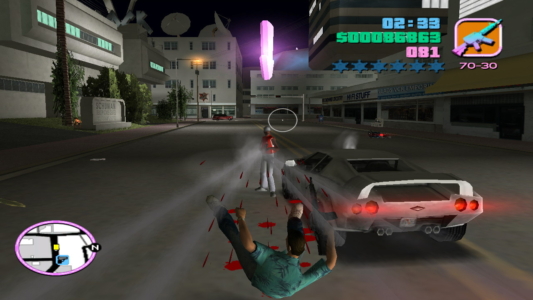
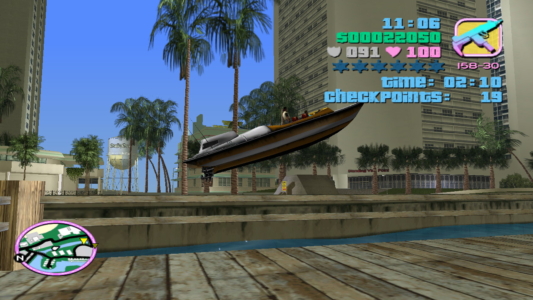
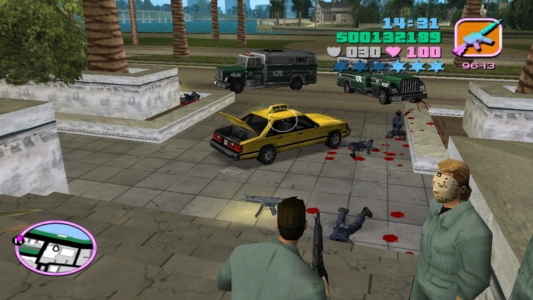
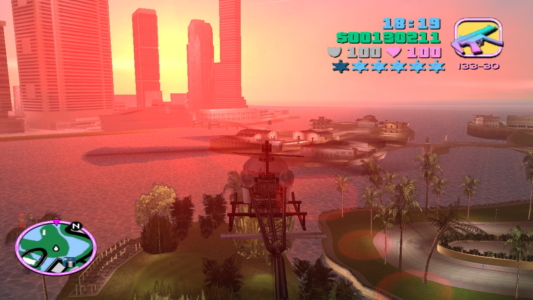
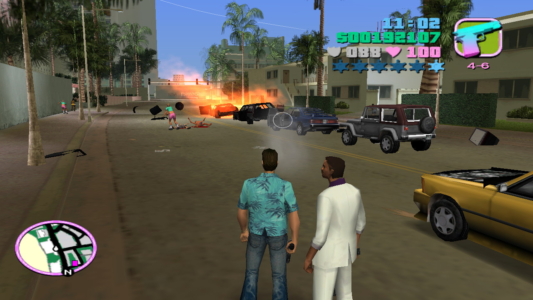
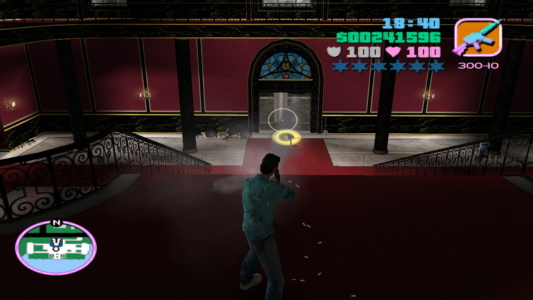

 Posts
Posts
Great review. You guys should do one for GTA V in time for its 3rd re-re-release… haha.
October 15, 2021 @ 9:42 am
Hi Nick. Glad you liked the review!
In my head GTA V is brand new, but I forget it originally came out on Xbox 360 in 2013…
Still, there are a couple of other options if we decide to cover more games in the series.
October 17, 2021 @ 12:35 pm